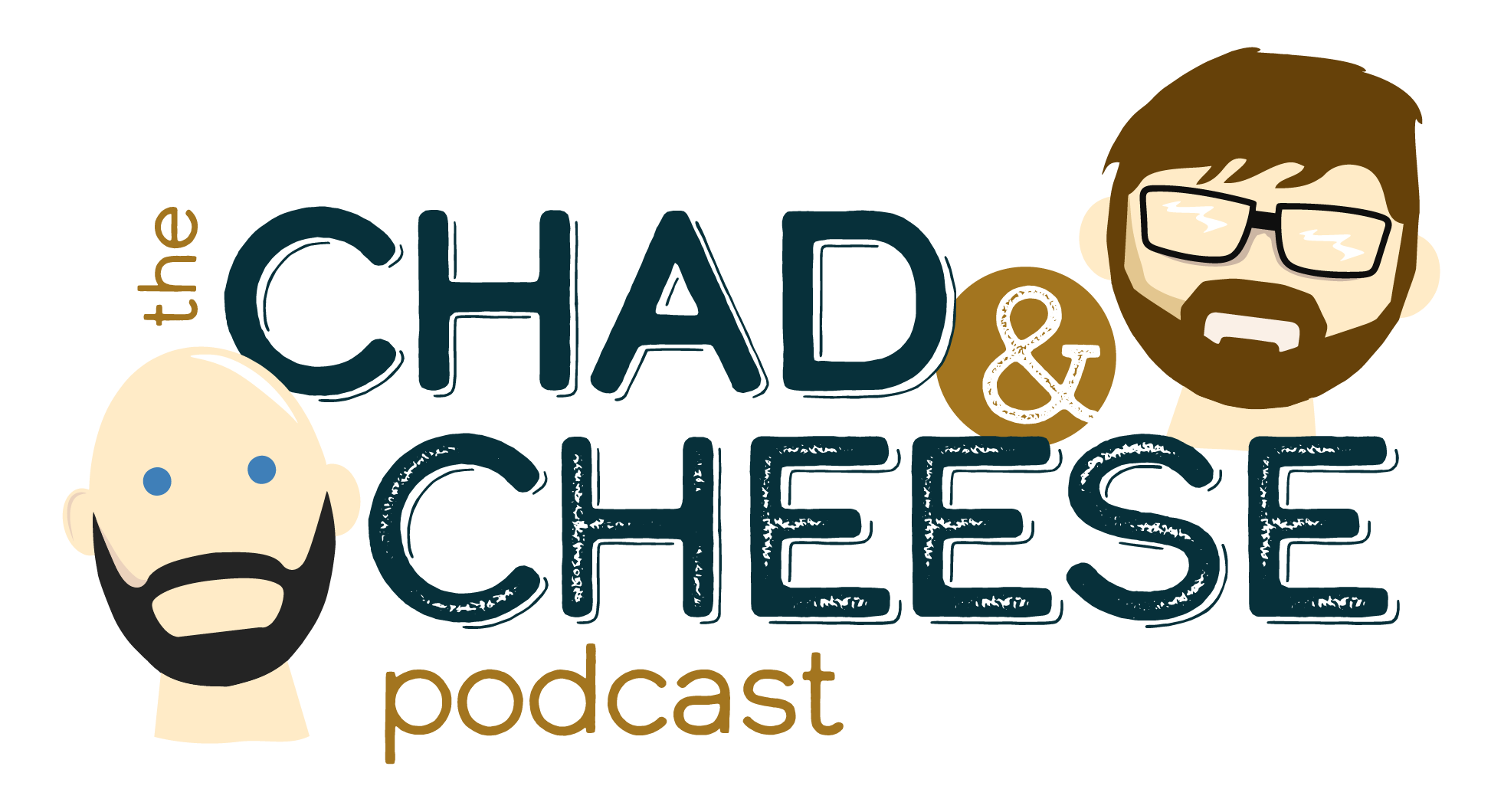All things Celtic
Celt-crazy after all these years
n
Iu2019m not sure when I became fascinated by the Celts, the Bronze and Iron Age people, who fought Julius Caesar as the Gauls. I know I was young, teen or preteen. I grew up in a Boston suburb and suddenly Celtic didnu2019t just describe the hometown basketball team, or the Irish of South Boston, u00a0but an ancient people.
n
I do remember the phrase that captured my imagination. It was in a magazine or newspaper article. Iu2019m not sure what the piece was about, maybe conflict between the Northern Irish or a biography of Dylan Thomas? I dunno.
n
I remember the paragraph that resonated so much that I have read whatever I could about this people for the last sixty-five years, studied Celtic art, visited Iron Age village reproductions and read all the novels of Morgan Llewelyn. I can still see the words on the page:
n
u201cFor the Englishman, the law is the law. All of English society is based upon the long tradition of common law. It is inviolable, the law is the law. For the Celt, the law is the law? Of course it is . . . but . . . Well, there are some exceptions, arenu2019t there.u201d
n
This world that isnu2019t really black and white, but nuanced with various shades of gray appealed to my rebellious-kid self, and yes, I admit it still does.
n
Who were the Celts?
n
The Celts were an ancient people. The earliest known settlements were in Hallstatt, near Salzburg Austria around 700 B.C,E. Archeologists have uncovered chieftains graves and both bronze and iron tools and weapons there. The community uncovered in La Tu00e8ne, on the northern shore of Lake Neuchu00e2tel showed a curvilinear style of decoration that has been copied for centuries, notably by craftsmen of the Art Nouveau (Louis Comfort Tiffany and Lalique) and u00a0Pre-Raphaelite and Celtic Revival painters (Dante Gabriel Rosetti, John Duncan) the at the turn of the twentieth century.
n
The Celts lived in extended family groups, in whatever architecture made sense for the terrain, some in hillforts, some in crannogs, a cluster of roundhouse on stilts in a marsh with elevated wooden paths. Celtic communities were agricultural and pastoral, farming in some places and in others keeping herds of sheep or cattle.
n
They traded with everyone; graves include luxury items from Phoenicia in Mesopotemia, whalebone carvings from north of the arctic circle, as well as items from northern Africa.
n
Much of what we know of the Celts come from Greek and Roman writers who considered them less u201ccivilized.u201d The name we call this people by was invented by the Greeks, Keltoi.
n
Some passed down theu00a0 chieftain title to children, but often through the matrilineal line. Some chiefs were chosen by the tribe, either an elders council or u201celected.u201d Women held property, could be chosen as chieftains.
n
Ancient writers described the Celtic warrior as u201chis hair slaked with lime so is was white blond and tied back at the neck. wearing a long and drooping mustache and no beard. The nineteenth century statue of Ambiorix of the Belgae, who fought Ceasar is a heroic vision of such a warrior.
n
Artists have often portrayed Celtic warriors romantically. One of my favorite statues is a Roman marble copy of a long lost Greek bronze. Itu2019s called The Dying Gaul u00a0and itu2019s it the Capitoline Museum in Rome and is pictured at right.
n
There were classes of a sort, chiefs were often warriors, but not always. There was a wide u201cpriestu201d class called Druids or Fiddich in some places. Some writers differentiate more saying that the Druids were part of the Fiddich, which included, mages and diviners, judges, healers, and bards (not just harp playing poets and singers, but those who kept the oral tradition and history of the tribe.)
n
The Greeks were reasonably sanguine toward the Celts. Some philosophers said they learned from the druids, that knowledge of the stars and their medicine, was more advanced than the Greeks in many ways. Greek writers still called them barbarians, of course, but not the worst kind.
n
The Celts had no written language; all knowledge was memorized and recited, a completely oral tradition. However much that we know about them comes from linguists tracing the languages that have survived. There are two strains P-Celtic, or Brythonic languages, are spoken in Wales, Cornwall, Brittany and Q-Celtic or Goidelic languages are Irish, Scots Gaelic and Manx. These are all Indo-European languages and show a migration from the North of India somewhere in prehistory. From 1000 B.C.E. to the Roman destruction of the Gauls and conquest of Britain The Celts dominated Europe from Galatia on the Greek peninsula to Spain and Britain Bounded by Germanic and Norse tribes to the North, and Etruscan and other Southern European tribes.
n
Letu2019s be clear the Celts were a primitive people. Ancient writers tell us how they burned people in great wicker baskets as human sacrifice to their Gods. Some writers say these were criminals, but still burning people alive isnu2019t nice. These same writers say that Celts revered the human head and that warriors andu00a0 chieftains head decapitated enemy heads on their person and in their houses as decorations, Eeewue!
n
They worshiped their gods in nature, according to cycles of the sun, equinoxes and solstices, and some halfway points that have turned into holidays, in early February (Groundhog day), Early May (May Day), August, and late October (Halloween). They were big on bonfire celebrations, some evidently burning more than logs. They worshiped in sacred groves of trees, usually Oaks. Chartres cathedral is built on the site of the great Grove of the Carnutes, which Julius Caesar burned when he defeated the Gaulish tribe and took there chief Vercingetorix back to Rome in chains.
n
Not popular with everyone
n
Caesar really hated the Druids; he felt they commanded too much power by virtue of superstition and could encourage Gauls to rise up again at any time. So destroyed the Druid school in Aix and Suetonius Paulinus attacked Mona the druid college on Anglesey in todayu2019s Wales.
n
Celts were lousy at fighting the Romans. They would work themselves into a frenzy and charge as a collection of individuals, often naked, into a Roman phalanx formation of shields and spears -like a big porcupine. The Romans would just roll over them.
n
The Roman Church didnu2019t much like Druids either. St. Patrick converted the High King and the kings of the four kingdoms at Tara undermining the power of the Druids, driving the u201csnakes from Ireland.u201d One of the first declared heretics, was Pelagius, of the Celtic church who preached not u201coriginal sin,u201d but u00a0u201coriginal blessing,u201d God gave to man the blessing of nature, and the love of each other, Our place in the afterlife was guaranteed if we but cared for the Earth and each other. The worst of the Pelagian heresy was that people could maintain a direct relationship with God by this duty of care and reverence, not needing anyone to intercede for them. Pelagius was banished to Alexandria where he died in 418 C.E.
n
The stereotype-traits about the people of the six remaining Celtic u201cnationsu201d Scotland, Ireland, Wales Cornwall, The Isle of Man, are a love of story, music, poetry, and laughter, but also dark, brooding tendencies. There are jokes about a propensity to drink, u201cThe Good Lord made whiskey, so Ireland wouldnu2019t rule the world.u201d u201cWherever you find four Scotsmen, youu2019ll find a fifth.u201d
n
Celts and me, again
n
So why do I have this fascination, obsession, with the Celts. Could be itu2019s in my blood. My motheru2019s family were Clearance Scots kicked off their sharecropping farms in the mid-eighteenth century so the laird could raise sheep to sell wool to the Birmingham mills. They went from the Highlands and Orkney to Northern Ireland to America chasing their land of their own. My father always maintained his family was English, even if his mother was of Scots heritage, Before England though, the Cullers may have come from that slice of Europe that includes Alsace -Loraine, the West bank of the Rhine and Northwest Switzerland. According to family lore they were Huguenots, French Protestants, followers of John Calvin, who fled persecution. Dunno. Havenu2019t tracked back that far, but my DNA shows markers for that area as well as Scotland..
n
I doodled the triple spiral, pictured above, for a very long time. My mother saved a fourth grade math test with triple spirals in the margins in the margins and an admonition from the teacher, u201cMessy! If you finish early put your pencil down.u201d The triple spiral is a much older symbol. It is found on the curbstone of the Megalithic people tomb at New Grange, north of Dublin (3200 B.C.E.), but it found its way into Celtic decoration. Itu2019s the design on my wedding ring, also pictured above with Celtic artifacts. (My wife and I connect around things Celtic.)
n
What Iu2019ve learned from the Celts is a reverence for nature, for springs and glades and groves. I love of trees and wood. I respect the path of the sun and the seasons of the year, I love music and everyone knows how I love a story.
n
And yes, I believe that the law is the law . . . but . . .u00a0 there are exceptions every now and again.
“,”tablet”:”
Celt-crazy after all these years
n
Iu2019m not sure when I became fascinated by the Celts, the Bronze and Iron Age people, who fought Julius Caesar as the Gauls. I know I was young, teen or preteen. I grew up in a Boston suburb and suddenly Celtic didnu2019t just describe the hometown basketball team, or the Irish of South Boston, but an ancient people.
n
I do remember the phrase that captured my imagination. It was in a magazine or newspaper article. Iu2019m not sure what the piece was about, maybe conflict between the Northern Irish or a biography of Dylan Thomas? I dunno.
n
I remember the paragraph that resonated so much that I have read whatever I could about this people for the last sixty-five years, studied Celtic art, visited Iron Age village reproductions and read all the novels of Morgan Llewelyn. I can still see the words on the page:
n
u201cFor the Englishman, the law is the law. All of English society is based upon the long tradition of common law. It is inviolable, the law is the law. For the Celt, the law is the law? Of course it is . . . but . . . Well, there are some exceptions, arenu2019t there.u201d
n
This world that isnu2019t really black and white, but nuanced with various shades of gray appealed to my rebellious-kid self, and yes, I admit it still does.
n
Who were the Celts?
n
The Celts were an ancient people. The earliest known settlements were in Hallstatt, near Salzburg Austria around 700 B.C,E. Archeologists have uncovered chieftains graves and both bronze and iron tools and weapons there. The community uncovered in La Tu00e8ne, on the northern shore of Lake Neuchu00e2tel showed a curvilinear style of decoration that has been copied for centuries, notably by craftsmen of the Art Nouveau (Louis Comfort Tiffany and Lalique) and Pre-Raphaelite and Celtic Revival painters (Dante Gabriel Rosetti, John Duncan) the at the turn of the twentieth century.
n
The Celts lived in extended family groups, in whatever architecture made sense for the terrain, some in hillforts, some in crannogs, a cluster of roundhouse on stilts in a marsh with elevated wooden paths. Celtic communities were agricultural and pastoral, farming in some places and in others keeping herds of sheep or cattle.
n
They traded with everyone; graves include luxury items from Phoenicia in Mesopotemia, whalebone carvings from north of the arctic circle, as well as items from northern Africa.
n
Much of what we know of the Celts come from Greek and Roman writers who considered them less u201ccivilized.u201d The name we call this people by was invented by the Greeks, Keltoi.
n
Some passed down the chieftain title to children, but often through the matrilineal line. Some chiefs were chosen by the tribe, either an elders council or u201celected.u201d Women held property, could be chosen as chieftains.
n
Ancient writers described the Celtic warrior as u201chis hair slaked with lime so is was white blond and tied back at the neck. wearing a long and drooping mustache and no beard. The nineteenth century statue of Ambiorix of the Belgae, who fought Ceasar is a heroic vision of such a warrior.
n
Artists have often portrayed Celtic warriors romantically. One of my favorite statues is a Roman marble copy of a long lost Greek bronze. Itu2019s called The Dying Gaul and itu2019s it the Capitoline Museum in Rome and is pictured at right.
n
There were classes of a sort, chiefs were often warriors, but not always. There was a wide u201cpriestu201d class called Druids or Fiddich in some places. Some writers differentiate more saying that the Druids were part of the Fiddich, which included, mages and diviners, judges, healers, and bards (not just harp playing poets and singers, but those who kept the oral tradition and history of the tribe.)
n
The Greeks were reasonably sanguine toward the Celts. Some philosophers said they learned from the druids, that knowledge of the stars and their medicine, was more advanced than the Greeks in many ways. Greek writers still called them barbarians, of course, but not the worst kind.
n
The Celts had no written language; all knowledge was memorized and recited, a completely oral tradition. However much that we know about them comes from linguists tracing the languages that have survived. There are two strains P-Celtic, or Brythonic languages, are spoken in Wales, Cornwall, Brittany and Q-Celtic or Goidelic languages are Irish, Scots Gaelic and Manx. These are all Indo-European languages and show a migration from the North of India somewhere in prehistory. From 1000 B.C.E. to the Roman destruction of the Gauls and conquest of Britain The Celts dominated Europe from Galatia on the Greek peninsula to Spain and Britain Bounded by Germanic and Norse tribes to the North, and Etruscan and other Southern European tribes.
n
Letu2019s be clear the Celts were a primitive people. Ancient writers tell us how they burned people in great wicker baskets as human sacrifice to their Gods. Some writers say these were criminals, but still burning people alive isnu2019t nice. These same writers say that Celts revered the human head and that warriors and chieftains head decapitated enemy heads on their person and in their houses as decorations, Eeewue!
n
They worshiped their gods in nature, according to cycles of the sun, equinoxes and solstices, and some halfway points that have turned into holidays, in early February (Groundhog day), Early May (May Day), August, and late October (Halloween). They were big on bonfire celebrations, some evidently burning more than logs. They worshiped in sacred groves of trees, usually Oaks. Chartres cathedral is built on the site of the great Grove of the Carnutes, which Julius Caesar burned when he defeated the Gaulish tribe and took there chief Vercingetorix back to Rome in chains.
n
Not popular with everyone
n
Caesar really hated the Druids; he felt they commanded too much power by virtue of superstition and could encourage Gauls to rise up again at any time. So destroyed the Druid school in Aix and Suetonius Paulinus attacked Mona the druid college on Anglesey in todayu2019s Wales.
n
Celts were lousy at fighting the Romans. They would work themselves into a frenzy and charge as a collection of individuals, often naked, into a Roman phalanx formation of shields and spears -like a big porcupine. The Romans would just roll over them.
n
The Roman Church didnu2019t much like Druids either. St. Patrick converted the High King and the kings of the four kingdoms at Tara undermining the power of the Druids, driving the u201csnakes from Ireland.u201d One of the first declared heretics, was Pelagius, of the Celtic church who preached not u201coriginal sin,u201d but u201coriginal blessing,u201d God gave to man the blessing of nature, and the love of each other, Our place in the afterlife was guaranteed if we but cared for the Earth and each other. The worst of the Pelagian heresy was that people could maintain a direct relationship with God by this duty of care and reverence, not needing anyone to intercede for them. Pelagius was banished to Alexandria where he died in 418 C.E.
n
The stereotype-traits about the people of the six remaining Celtic u201cnationsu201d Scotland, Ireland, Wales Cornwall, The Isle of Man, are a love of story, music, poetry, and laughter, but also dark, brooding tendencies. There are jokes about a propensity to drink, u201cThe Good Lord made whiskey, so Ireland wouldnu2019t rule the world.u201d u201cWherever you find four Scotsmen, youu2019ll find a fifth.u201d
n
Celts and me, again
n
So why do I have this fascination, obsession, with the Celts. Could be itu2019s in my blood. My motheru2019s family were Clearance Scots kicked off their sharecropping farms in the mid-eighteenth century so the laird could raise sheep to sell wool to the Birmingham mills. They went from the Highlands and Orkney to Northern Ireland to America chasing their land of their own. My father always maintained his family was English, even if his mother was of Scots heritage, Before England though, the Cullers may have come from that slice of Europe that includes Alsace -Loraine, the West bank of the Rhine and Northwest Switzerland. According to family lore they were Huguenots, French Protestants, followers of John Calvin, who fled persecution. Dunno. Havenu2019t tracked back that far, but my DNA shows markers for that area as well as Scotland..
n
I doodled the triple spiral, pictured above, for a very long time. My mother saved a fourth grade math test with triple spirals in the margins in the margins and an admonition from the teacher, u201cMessy! If you finish early put your pencil down.u201d The triple spiral is a much older symbol. It is found on the curbstone of the Megalithic people tomb at New Grange, north of Dublin (3200 B.C.E.), but it found its way into Celtic decoration. Itu2019s the design on my wedding ring, also pictured above with Celtic artifacts. (My wife and I connect around things Celtic.)
n
What Iu2019ve learned from the Celts is a reverence for nature, for springs and glades and groves. I love of trees and wood. I respect the path of the sun and the seasons of the year, I love music and everyone knows how I love a story.
n
And yes, I believe that the law is the law . . . but . . . there are exceptions every now and again.
“,”phone”:”
Celt-crazy after all these years
n
n
Iu2019m not sure when I became fascinated by the Celts, the Bronze and Iron Age people, who fought Julius Caesar as the Gauls. I know I was young, teen or preteen. I grew up in a Boston suburb and suddenly Celtic didnu2019t just describe the hometown basketball team, or the Irish of South Boston, but an ancient people.
n
I do remember the phrase that captured my imagination. It was in a magazine or newspaper article. Iu2019m not sure what the piece was about, maybe conflict between the Northern Irish or a biography of Dylan Thomas? I dunno.
n
I remember the paragraph that resonated so much that I have read whatever I could about this people for the last sixty-five years, studied Celtic art, visited Iron Age village reproductions and read all the novels of Morgan Llewelyn. I can still see the words on the page:
n
u201cFor the Englishman, the law is the law. All of English society is based upon the long tradition of common law. It is inviolable, the law is the law. For the Celt, the law is the law? Of course it is . . . but . . . Well, there are some exceptions, arenu2019t there.u201d
n
This world that isnu2019t really black and white, but nuanced with various shades of gray appealed to my rebellious-kid self, and yes, I admit it still does.
n
Who were the Celts?
n
n
The Celts were an ancient people. The earliest known settlements were in Hallstatt, near Salzburg Austria around 700 B.C,E. Archeologists have uncovered chieftains graves and both bronze and iron tools and weapons there. The community uncovered in La Tu00e8ne, on the northern shore of Lake Neuchu00e2tel showed a curvilinear style of decoration that has been copied for centuries, notably by craftsmen of the Art Nouveau (Louis Comfort Tiffany and Lalique) and Pre-Raphaelite and Celtic Revival painters (Dante Gabriel Rosetti, John Duncan) the at the turn of the twentieth century.
n
The Celts lived in extended family groups, in whatever architecture made sense for the terrain, some in hillforts, some in crannogs, a cluster of roundhouse on stilts in a marsh with elevated wooden paths. Celtic communities were agricultural and pastoral, farming in some places and in others keeping herds of sheep or cattle.
n
They traded with everyone; graves include luxury items from Phoenicia in Mesopotemia, whalebone carvings from north of the arctic circle, as well as items from northern Africa.
n
Much of what we know of the Celts come from Greek and Roman writers who considered them less u201ccivilized.u201d The name we call this people by was invented by the Greeks, Keltoi.
n
Some passed down the chieftain title to children, but often through the matrilineal line. Some chiefs were chosen by the tribe, either an elders council or u201celected.u201d Women held property, could be chosen as chieftains.
n
Ancient writers described the Celtic warrior as u201chis hair slaked with lime so is was white blond and tied back at the neck. wearing a long and drooping mustache and no beard. The nineteenth century statue of Ambiorix of the Belgae, who fought Ceasar is a heroic vision of such a warrior.
n
Artists have often portrayed Celtic warriors romantically. One of my favorite statues is a Roman marble copy of a long lost Greek bronze. Itu2019s called The Dying Gaul and itu2019s it the Capitoline Museum in Rome and is pictured at right.
n
There were classes of a sort, chiefs were often warriors, but not always. There was a wide u201cpriestu201d class called Druids or Fiddich in some places. Some writers differentiate more saying that the Druids were part of the Fiddich, which included, mages and diviners, judges, healers, and bards (not just harp playing poets and singers, but those who kept the oral tradition and history of the tribe.)
n
The Greeks were reasonably sanguine toward the Celts. Some philosophers said they learned from the druids, that knowledge of the stars and their medicine, was more advanced than the Greeks in many ways. Greek writers still called them barbarians, of course, but not the worst kind.
n
The Celts had no written language; all knowledge was memorized and recited, a completely oral tradition. However much that we know about them comes from linguists tracing the languages that have survived. There are two strains P-Celtic, or Brythonic languages, are spoken in Wales, Cornwall, Brittany and Q-Celtic or Goidelic languages are Irish, Scots Gaelic and Manx. These are all Indo-European languages and show a migration from the North of India somewhere in prehistory. From 1000 B.C.E. to the Roman destruction of the Gauls and conquest of Britain The Celts dominated Europe from Galatia on the Greek peninsula to Spain and Britain Bounded by Germanic and Norse tribes to the North, and Etruscan and other Southern European tribes.
n
Letu2019s be clear the Celts were a primitive people. Ancient writers tell us how they burned people in great wicker baskets as human sacrifice to their Gods. Some writers say these were criminals, but still burning people alive isnu2019t nice. These same writers say that Celts revered the human head and that warriors and chieftains head decapitated enemy heads on their person and in their houses as decorations, Eeewue!
n
They worshiped their gods in nature, according to cycles of the sun, equinoxes and solstices, and some halfway points that have turned into holidays, in early February (Groundhog day), Early May (May Day), August, and late October (Halloween). They were big on bonfire celebrations, some evidently burning more than logs. They worshiped in sacred groves of trees, usually Oaks. Chartres cathedral is built on the site of the great Grove of the Carnutes, which Julius Caesar burned when he defeated the Gaulish tribe and took there chief Vercingetorix back to Rome in chains.
n
Not popular with everyone
n
n
Caesar really hated the Druids; he felt they commanded too much power by virtue of superstition and could encourage Gauls to rise up again at any time. So destroyed the Druid school in Aix and Suetonius Paulinus attacked Mona the druid college on Anglesey in todayu2019s Wales.
n
Celts were lousy at fighting the Romans. They would work themselves into a frenzy and charge as a collection of individuals, often naked, into a Roman phalanx formation of shields and spears -like a big porcupine. The Romans would just roll over them.
n
The Roman Church didnu2019t much like Druids either. St. Patrick converted the High King and the kings of the four kingdoms at Tara undermining the power of the Druids, driving the u201csnakes from Ireland.u201d One of the first declared heretics, was Pelagius, of the Celtic church who preached not u201coriginal sin,u201d but u201coriginal blessing,u201d God gave to man the blessing of nature, and the love of each other, Our place in the afterlife was guaranteed if we but cared for the Earth and each other. The worst of the Pelagian heresy was that people could maintain a direct relationship with God by this duty of care and reverence, not needing anyone to intercede for them. Pelagius was banished to Alexandria where he died in 418 C.E.
n
The stereotype-traits about the people of the six remaining Celtic u201cnationsu201d Scotland, Ireland, Wales Cornwall, The Isle of Man, are a love of story, music, poetry, and laughter, but also dark, brooding tendencies. There are jokes about a propensity to drink, u201cThe Good Lord made whiskey, so Ireland wouldnu2019t rule the world.u201d u201cWherever you find four Scotsmen, youu2019ll find a fifth.u201d
n
Celts and me, again
n
n
So why do I have this fascination, obsession, with the Celts. Could be itu2019s in my blood. My motheru2019s family were Clearance Scots kicked off their sharecropping farms in the mid-eighteenth century so the laird could raise sheep to sell wool to the Birmingham mills. They went from the Highlands and Orkney to Northern Ireland to America chasing their land of their own. My father always maintained his family was English, even if his mother was of Scots heritage, Before England though, the Cullers may have come from that slice of Europe that includes Alsace -Loraine, the West bank of the Rhine and Northwest Switzerland. According to family lore they were Huguenots, French Protestants, followers of John Calvin, who fled persecution. Dunno. Havenu2019t tracked back that far, but my DNA shows markers for that area as well as Scotland..
n
I doodled the triple spiral, pictured above, for a very long time. My mother saved a fourth grade math test with triple spirals in the margins in the margins and an admonition from the teacher, u201cMessy! If you finish early put your pencil down.u201d The triple spiral is a much older symbol. It is found on the curbstone of the Megalithic people tomb at New Grange, north of Dublin (3200 B.C.E.), but it found its way into Celtic decoration. Itu2019s the design on my wedding ring, also pictured above with Celtic artifacts. (My wife and I connect around things Celtic.)
n
What Iu2019ve learned from the Celts is a reverence for nature, for springs and glades and groves. I love of trees and wood. I respect the path of the sun and the seasons of the year, I love music and everyone knows how I love a story.
n
And yes, I believe that the law is the law . . . but . . . there are exceptions every now and again.
“}},”slug”:”et_pb_text”}” data-et-multi-view-load-tablet-hidden=”true” data-et-multi-view-load-phone-hidden=”true”>
Celt-crazy after all these years
I’m not sure when I became fascinated by the Celts, the Bronze and Iron Age people, who fought Julius Caesar as the Gauls. I know I was young, teen or preteen. I grew up in a Boston suburb and suddenly Celtic didn’t just describe the hometown basketball team, or the Irish of South Boston, but an ancient people.
I do remember the phrase that captured my imagination. It was in a magazine or newspaper article. I’m not sure what the piece was about, maybe conflict between the Northern Irish or a biography of Dylan Thomas? I dunno.
I remember the paragraph that resonated so much that I have read whatever I could about this people for the last sixty-five years, studied Celtic art, visited Iron Age village reproductions and read all the novels of Morgan Llewelyn. I can still see the words on the page:
“For the Englishman, the law is the law. All of English society is based upon the long tradition of common law. It is inviolable, the law is the law. For the Celt, the law is the law? Of course it is . . . but . . . Well, there are some exceptions, aren’t there.”
This world that isn’t really black and white, but nuanced with various shades of gray appealed to my rebellious-kid self, and yes, I admit it still does.
Who were the Celts?
The Celts were an ancient people. The earliest known settlements were in Hallstatt, near Salzburg Austria around 700 B.C,E. Archeologists have uncovered chieftains graves and both bronze and iron tools and weapons there. The community uncovered in La Tène, on the northern shore of Lake Neuchâtel showed a curvilinear style of decoration that has been copied for centuries, notably by craftsmen of the Art Nouveau (Louis Comfort Tiffany and Lalique) and Pre-Raphaelite and Celtic Revival painters (Dante Gabriel Rosetti, John Duncan) the at the turn of the twentieth century.
The Celts lived in extended family groups, in whatever architecture made sense for the terrain, some in hillforts, some in crannogs, a cluster of roundhouse on stilts in a marsh with elevated wooden paths. Celtic communities were agricultural and pastoral, farming in some places and in others keeping herds of sheep or cattle.
They traded with everyone; graves include luxury items from Phoenicia in Mesopotemia, whalebone carvings from north of the arctic circle, as well as items from northern Africa.
Much of what we know of the Celts come from Greek and Roman writers who considered them less “civilized.” The name we call this people by was invented by the Greeks, Keltoi.
Some passed down the chieftain title to children, but often through the matrilineal line. Some chiefs were chosen by the tribe, either an elders council or “elected.” Women held property, could be chosen as chieftains.
Ancient writers described the Celtic warrior as “his hair slaked with lime so is was white blond and tied back at the neck. wearing a long and drooping mustache and no beard. The nineteenth century statue of Ambiorix of the Belgae, who fought Ceasar is a heroic vision of such a warrior.
Artists have often portrayed Celtic warriors romantically. One of my favorite statues is a Roman marble copy of a long lost Greek bronze. It’s called The Dying Gaul and it’s it the Capitoline Museum in Rome and is pictured at right.
There were classes of a sort, chiefs were often warriors, but not always. There was a wide “priest” class called Druids or Fiddich in some places. Some writers differentiate more saying that the Druids were part of the Fiddich, which included, mages and diviners, judges, healers, and bards (not just harp playing poets and singers, but those who kept the oral tradition and history of the tribe.)
The Greeks were reasonably sanguine toward the Celts. Some philosophers said they learned from the druids, that knowledge of the stars and their medicine, was more advanced than the Greeks in many ways. Greek writers still called them barbarians, of course, but not the worst kind.
The Celts had no written language; all knowledge was memorized and recited, a completely oral tradition. However much that we know about them comes from linguists tracing the languages that have survived. There are two strains P-Celtic, or Brythonic languages, are spoken in Wales, Cornwall, Brittany and Q-Celtic or Goidelic languages are Irish, Scots Gaelic and Manx. These are all Indo-European languages and show a migration from the North of India somewhere in prehistory. From 1000 B.C.E. to the Roman destruction of the Gauls and conquest of Britain The Celts dominated Europe from Galatia on the Greek peninsula to Spain and Britain Bounded by Germanic and Norse tribes to the North, and Etruscan and other Southern European tribes.
Let’s be clear the Celts were a primitive people. Ancient writers tell us how they burned people in great wicker baskets as human sacrifice to their Gods. Some writers say these were criminals, but still burning people alive isn’t nice. These same writers say that Celts revered the human head and that warriors and chieftains head decapitated enemy heads on their person and in their houses as decorations, Eeewue!
They worshiped their gods in nature, according to cycles of the sun, equinoxes and solstices, and some halfway points that have turned into holidays, in early February (Groundhog day), Early May (May Day), August, and late October (Halloween). They were big on bonfire celebrations, some evidently burning more than logs. They worshiped in sacred groves of trees, usually Oaks. Chartres cathedral is built on the site of the great Grove of the Carnutes, which Julius Caesar burned when he defeated the Gaulish tribe and took there chief Vercingetorix back to Rome in chains.
Not popular with everyone
Caesar really hated the Druids; he felt they commanded too much power by virtue of superstition and could encourage Gauls to rise up again at any time. So destroyed the Druid school in Aix and Suetonius Paulinus attacked Mona the druid college on Anglesey in today’s Wales.
Celts were lousy at fighting the Romans. They would work themselves into a frenzy and charge as a collection of individuals, often naked, into a Roman phalanx formation of shields and spears -like a big porcupine. The Romans would just roll over them.
The Roman Church didn’t much like Druids either. St. Patrick converted the High King and the kings of the four kingdoms at Tara undermining the power of the Druids, driving the “snakes from Ireland.” One of the first declared heretics, was Pelagius, of the Celtic church who preached not “original sin,” but “original blessing,” God gave to man the blessing of nature, and the love of each other, Our place in the afterlife was guaranteed if we but cared for the Earth and each other. The worst of the Pelagian heresy was that people could maintain a direct relationship with God by this duty of care and reverence, not needing anyone to intercede for them. Pelagius was banished to Alexandria where he died in 418 C.E.
The stereotype-traits about the people of the six remaining Celtic “nations” Scotland, Ireland, Wales Cornwall, The Isle of Man, are a love of story, music, poetry, and laughter, but also dark, brooding tendencies. There are jokes about a propensity to drink, “The Good Lord made whiskey, so Ireland wouldn’t rule the world.” “Wherever you find four Scotsmen, you’ll find a fifth.”
Celts and me, again
So why do I have this fascination, obsession, with the Celts. Could be it’s in my blood. My mother’s family were Clearance Scots kicked off their sharecropping farms in the mid-eighteenth century so the laird could raise sheep to sell wool to the Birmingham mills. They went from the Highlands and Orkney to Northern Ireland to America chasing their land of their own. My father always maintained his family was English, even if his mother was of Scots heritage, Before England though, the Cullers may have come from that slice of Europe that includes Alsace -Loraine, the West bank of the Rhine and Northwest Switzerland. According to family lore they were Huguenots, French Protestants, followers of John Calvin, who fled persecution. Dunno. Haven’t tracked back that far, but my DNA shows markers for that area as well as Scotland..
I doodled the triple spiral, pictured above, for a very long time. My mother saved a fourth grade math test with triple spirals in the margins in the margins and an admonition from the teacher, “Messy! If you finish early put your pencil down.” The triple spiral is a much older symbol. It is found on the curbstone of the Megalithic people tomb at New Grange, north of Dublin (3200 B.C.E.), but it found its way into Celtic decoration. It’s the design on my wedding ring, also pictured above with Celtic artifacts. (My wife and I connect around things Celtic.)
What I’ve learned from the Celts is a reverence for nature, for springs and glades and groves. I love of trees and wood. I respect the path of the sun and the seasons of the year, I love music and everyone knows how I love a story.
And yes, I believe that the law is the law . . . but . . . there are exceptions every now and again.
The post All things Celtic appeared first on Wisdom from Unusual Places.
Originally Published on https://wisdomfromunusualplaces.com/blog/























